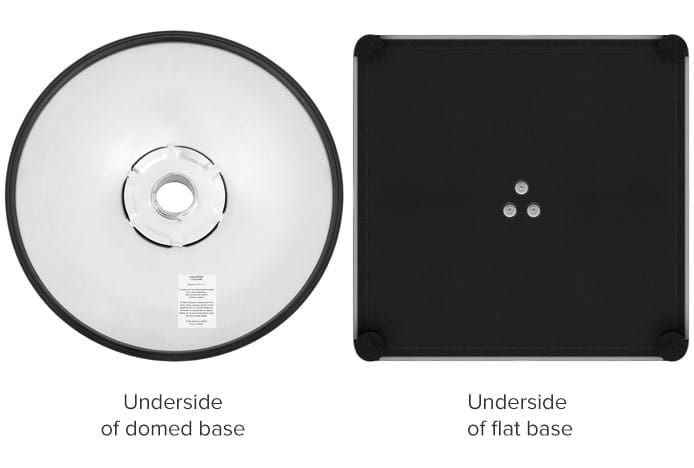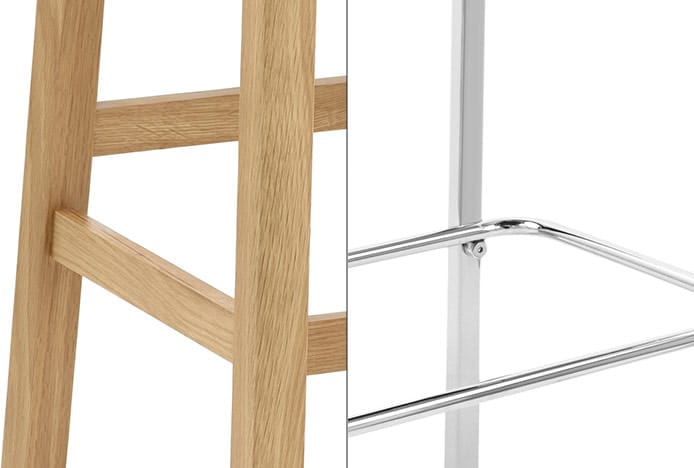How to Fix a Squeaky Bar Stool
By Philippa Baker, 27th September, 2014
From time to time, bar stools may start to squeak. But there’s no need to panic – we have a quick and simple solution. So it can be fixed you will need to identify where the sound is coming from, as there are a few possible areas that could be the cause. This will depend on the type of the stool and the sort of joints used in its frame. The easiest way to ascertain the source of the squeak will be with two people, one to sit on the seat to try and recreate the noise whilst the other listens.
You may be wondering why a stool that was noiseless to begin with can occasionally, over time, start to squeak. There is a simple reason for this - the prevalence of central heating in the modern home creates a very dry environment. This dries out the joints used in furniture, with the friction of the dry parts causing a high-pitched squeaking sound. Yet there’s no cause to worry as it can be easily silenced, either through lubrication or the tightening of screws which could have loosened over time. In this article we’ll talk you through the different possible sources and how best to fix them.

Squeaky Bases on Gas Lift Bar Stools
Gas lift stools are made up of a metal frame with a central column. Now and again these may start to squeak when they become dry, as described above, however it is usually pretty easy to pinpoint the source.
On bar stools with domed bases, 99% of all squeaking can be located to where the central column meets the base. To solve the problem, simply lift up the plastic collar and squirt a small amount of WD40 (or a similar product) around the circumference of the joint of the column into the base, letting it permeate. This will moisten any dryness caused by central heating, slightly lubricating the joint and stopping any noise. But take care not to drench the joint - it only needs a small squirt - and be sure to wipe off any residue straight away to prevent staining. Check back after a short while in case any has leaked out, and ensure you put a protective sheet down beforehand to protect your flooring.

The procedure is a little different with flat-based stools due to the difference in construction. With this type the central gas lift column connects to the flat base through three bolts in the centre. Whilst unlikely, squeaking could start if the bolts come loose; yet turning the stool upside down and tightening the bolts found on the underside can easily fix this.

Other Sources of Squeaks in Gas Lift Bar Stools
There are several other sections on a central column frame where squeaking could potentially occur, though these are much more uncommon. The first of these is the plate where the seat joins the metal column below. Concealed by upholstery, the frame of the seat is sometimes made of wood, and when dried out by central heating there is a small chance that it could start to squeak. In the vast majority of cases simply tightening the screws will remedy this.
Alternatively, a squeak might sound from where the top half of the gas lift column meets the bottom half of the column. Once again this is easy to silence with a light squirt of WD40. Only a very small amount will be needed, so don’t overdo it, and be sure to wipe any excess away to prevent staining the metalwork.
Fixed Height Stool Squeaks
On rare occasions the screws in a fixed height metal stool could work themselves loose due to heavy usage, causing a slight squeak when sat on. Yet whilst this is very rare, it’s easily correctable by simply tightening the screws. Alternatively you can opt for a design with a welded frame, well known for their core strength and stability. With the absence of joints there is no chance of screws loosening slightly, and hence no sound.
Likewise squeaking can sometimes occur in fixed height wooden stools, but for slightly different reasons. Wood naturally expands and contracts with temperature changes, and therefore joints can sometimes come loose. The easiest way to remedy this is by injecting glue into the joints. Whilst wood glue is recommended, other household adhesives like araldite or superglue can also be used. Look for one with a syringe and metal needle that can be pushed right into the joint space, ensuring the glue reaches the right places. Then wipe off any excess.

Like anything with moving parts, or simply anything we use a lot, it's normal to expect a small amount of wear and tear over time. Yet with these quick and easy solutions, there's no reason why you can't enjoy your bar stools squeak free for years to come. We hope this article has answered any questions you may have, however please do not hesitate to contact us if you have any further queries.
Please note: any repairs to bar stools are undertaken at a customer's own risk. Atlantic Shopping will not be held responsible for any damage incurred.
Related Articles
How To Remove Dents & Creases From Seats
Learn how to remove dents and creases from your seats with our handy guide..
Wood Care Guide
Keep your wooden furniture looking its best with our wood care guide..
How To Fix A Wobbly Bar Stool
Got a wobbly bar stool? Take a look at our very quick and easy solutions..
Get the Most Out of Your Bar Stools
Follow our ten tips to get the best out of your bar stools, both practically and visually..



















